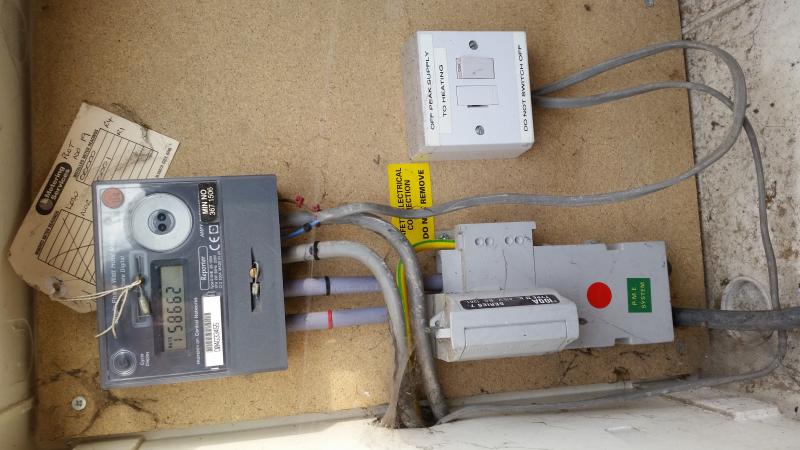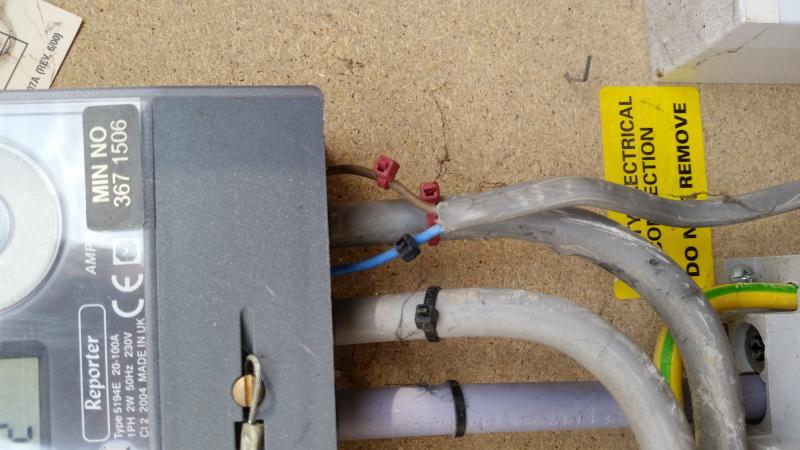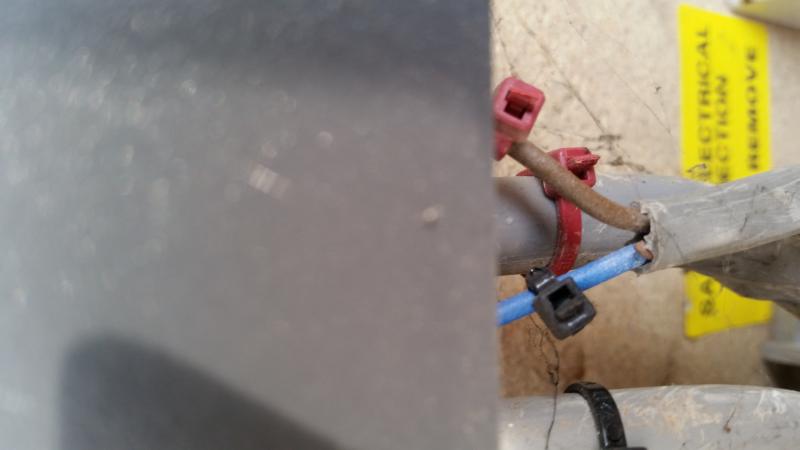Firstly this is my first post so be nice 
I got called out to a burnt out switch for an electric boiler (Standard 45A switch) on a relatively new estate (2005)
The boiler is a 9.5KW system, and does hot water and central heating.
it is supplied via a 10mm feed (northing wrong with that), what I noticed is there was a spur under the 45A switch labelled up as "off peak supply, isolate in meter box". I believe this just gives the boiler a live" supply signal at off peak times so it can heat water on an off peak rate.
I have attached pictures of what I found in the meter box and unless I'm being stupid, how is this aloud!!! 1.5mm T&E out of the meter to a spur only protected by a 100A fuse with the CPC cut out??
Has anyone else seen this sort of thing, is there maybe a small fuse in the meter ? (obviously I didn't want to open the meter)
Thanks Luke
I got called out to a burnt out switch for an electric boiler (Standard 45A switch) on a relatively new estate (2005)
The boiler is a 9.5KW system, and does hot water and central heating.
it is supplied via a 10mm feed (northing wrong with that), what I noticed is there was a spur under the 45A switch labelled up as "off peak supply, isolate in meter box". I believe this just gives the boiler a live" supply signal at off peak times so it can heat water on an off peak rate.
I have attached pictures of what I found in the meter box and unless I'm being stupid, how is this aloud!!! 1.5mm T&E out of the meter to a spur only protected by a 100A fuse with the CPC cut out??
Has anyone else seen this sort of thing, is there maybe a small fuse in the meter ? (obviously I didn't want to open the meter)
Thanks Luke





